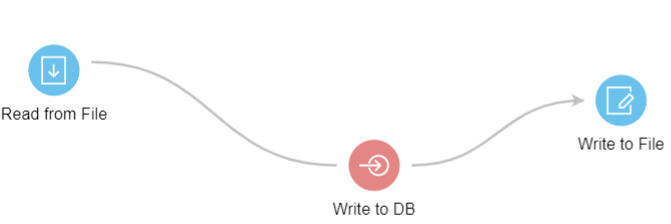Configuring Error Handling in Write to DB
The Write to DB stage has an error port which filters out records that cause database errors when writing the record to a database, such as a primary key constraint violation or a unique constraint violation. These records can then be routed along another path in the dataflow while other records are successfully committed. For example, if you are processing 100 records and records 4, 23, and 56 cause a database error, these three records would be routed through the error port while the other 97 records would be committed to the database.
When you run the dataflow, records that cause an error are routed through the error port. The records from the error port contain the fields specified in Write to DB plus the following fields:
- Error.code
- This field contains the numeric error code returned from the database. For example, given
the error
ORA-00001: unique constraint ANKUSH.SYS_C0010018) violated, the value in the Error.code field would be1. See your database software's documentation for a listing of error codes. - Error.Message
- This field contains the error message returned from the database. For example:
ORA-01034 ORACLE not available. In this case,ORACLE not availablewould be the value in the Error.Message field. See your database software's documentation for a listing of error messages. - Error.SQLState
- This field contains the SQLSTATE code which provides detailed information about the cause of the error. For a listing of SQLSTATE codes, see your database software's documentation.
- Timestamp
- The date and time on the Spectrum Technology Platform server when the error occurred.
- Username
- The name of the Spectrum Technology Platform user that ran the dataflow.
